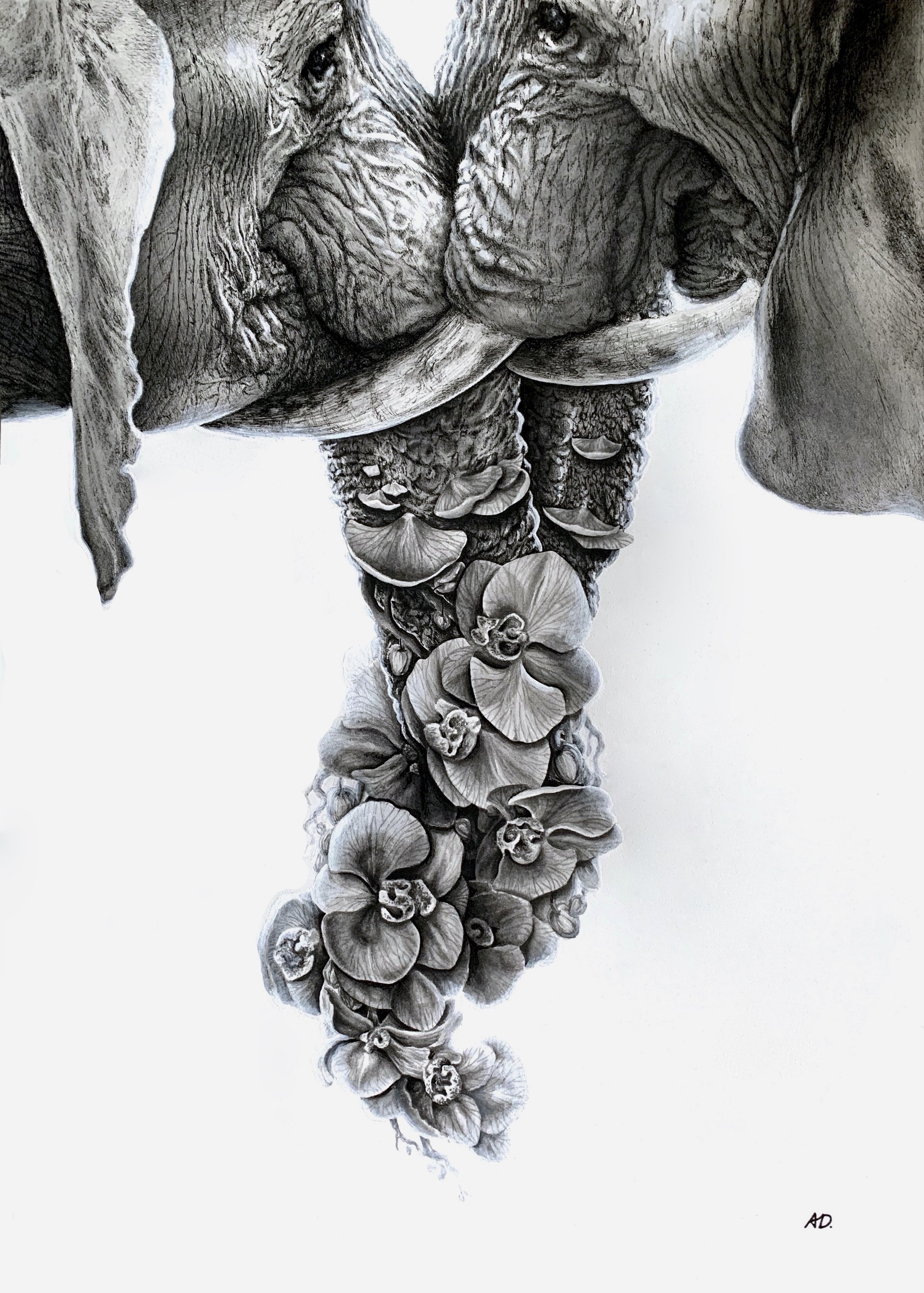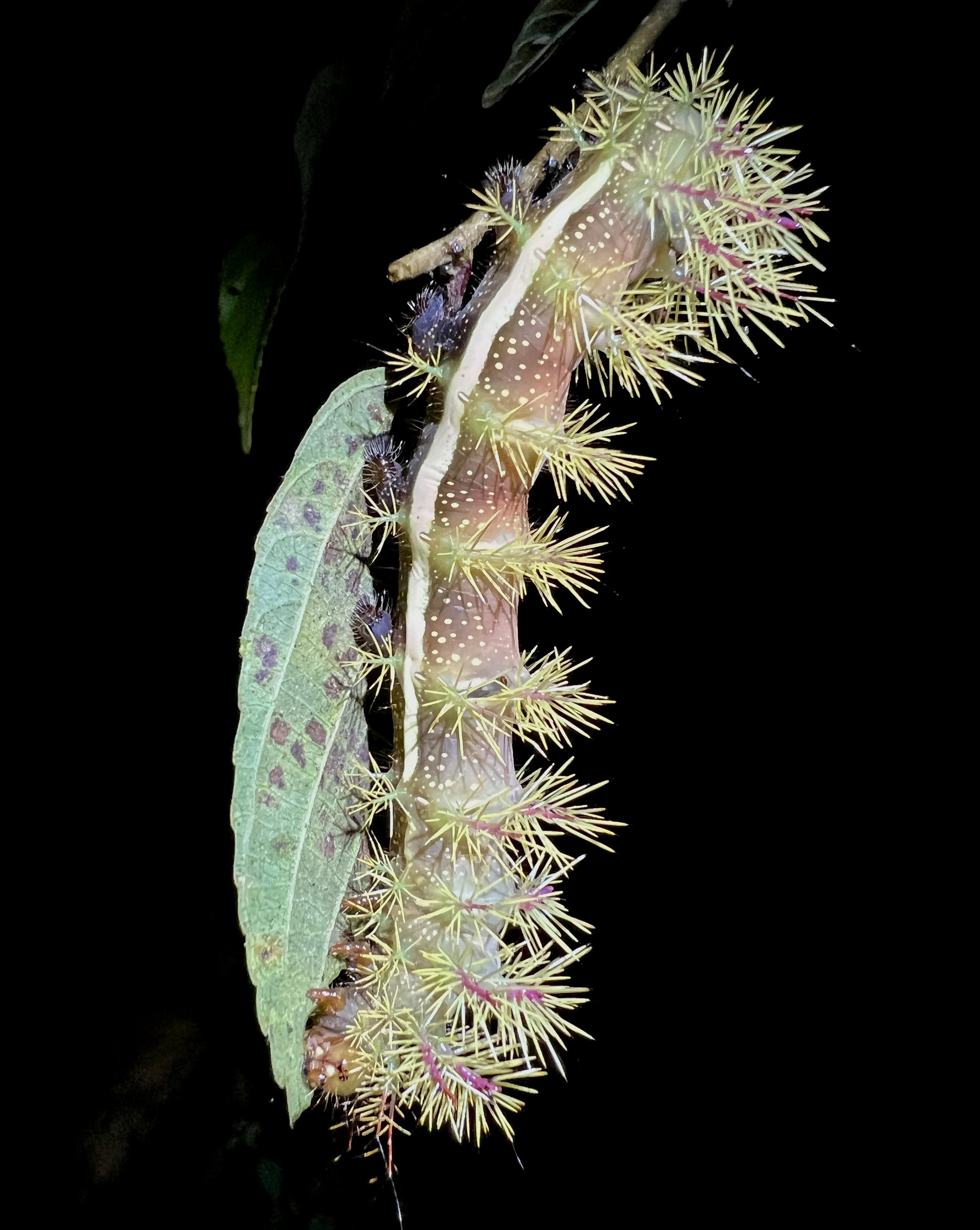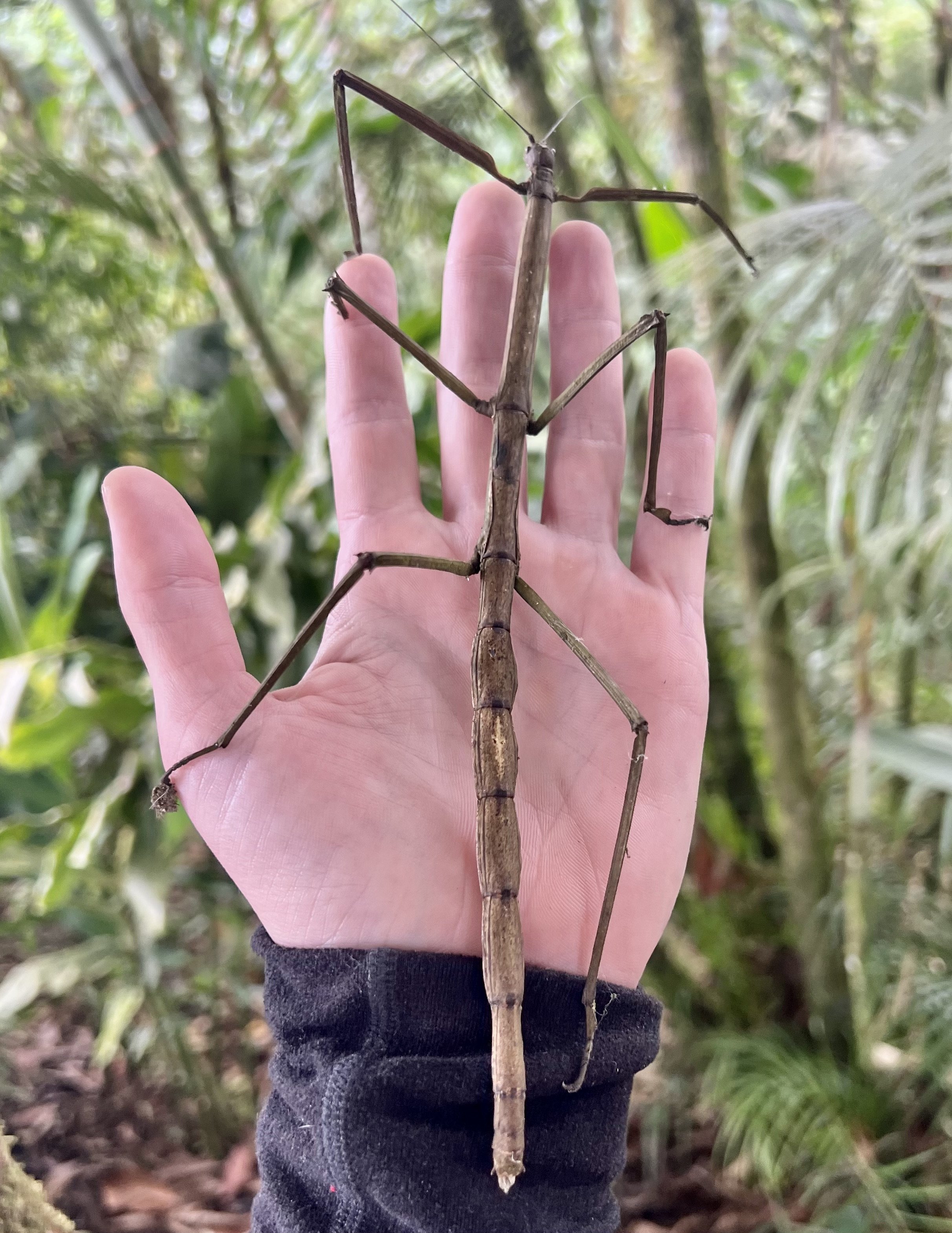Tropic
I have always felt deeply connected to nature. I grew up with parents who loved the outdoors and carried me up Half Dome at seven months old. As I grew, my mom taught me the names of all the wildflowers and made a hand-illustrated wildflower booklet that I could take on hikes (I still have it). She has always been in awe of every sunset, even if it’s just the tiniest bit of orange. She loves clouds, and is always reminding me to look up and take it all in.
My dad taught me how to identify and catch lizards and snakes, and instilled in me a deep love of entomology and mycology. He taught me to really look, and to find the hidden treasures of the tiny natural world. His enthusiasm and excitement over every beetle is what inspires me to find the beauty and wonder in every detail.
Sometimes I feel like a camera with two lenses, a wide angle from my mom and a macro lens from my dad. I am so eternally gratefully for these two lenses, and I do everything I can to nurture and care for them. I may be obsessed with fantasy books, but I know that the magic of our world is right here in front of us.
“Isn't it enough to see that a garden is beautiful without having to believe that there are fairies at the bottom of it too?” - Douglas Adams
I was going to start this off with a pun, but that just seems irrelephant… anyway, elephants are super amazing! The name “elephant” comes from the Greek word “elephas”, which translates to “ivory” in reference to their tusks. An elephants tusks are actually overgrown incisors, and though they’re pretty neat, there are many other fascinating parts of an elephant!
Trunk
An elephants trunk is a fusion of their nose and upper lip, and can grow up to 2m long and weigh up to 140 kilos! Their trunks are extremely *ehem* handy, and are used for drinking, eating, spraying mud and dust, communication and defense. They contain 40,000 muscles, including large muscles on the sides to lift the trunk and many smaller muscles for delicate movements. Their trunks can push over entire trees, and shift through a bush for a single berry.
Contrary to popular belief, elephants don’t drink by sucking water through their trunks like a straw. They suck water into their trunks (about 4L), then spray it into their mouths. They drink about 200L per day, so that’s a lot of spraying! For grabbing food and delicate maneuvers, Asian elephants have one “finger” on the end of their trunk, while African elephants have two.
Ears
An elephants big, flappy ears are super cute, but they’re also super useful! While their size and shape collects more sound waves and improves their hearing, an elephants ears are actually primarily used as cooling systems! When their hot blood passes through the many veins in their ears, it cools as it’s exposed to the air. This cooled blood continues through the body, lowering the elephants body temperature. On windy days they boost this process by holding their ears out and towards the breeze. They also use their ears like fans, flapping them to cool off.
A few more elephant fun facts:
Elephants are either right or left tusked; you can tell which because the more used tusk will be shorter due to wear and tear.
Their wrinkles are strategic! The folds trap moisture and slow the evaporation process, helping the elephant keep cool.
They’re super smart! They have the largest brains of all land mammals and are thought to be as, if not more, intelligent than dolphins or chimps.
Elephants display sadness and grief along with other emotions, and are known to revisit places a family member died, pausing there for several minutes.
They have the longest eyelashes in the world at 13cm! Perfect for keeping pesky insects away from their eyes.
As large as an elephants gut is, it doesn’t function very well. Most of what they eat gets pooped out, but this is great for their ecosystem! Their poop fertilizes the ground and spreads seeds far and wide. Dung beetles lay larvae in it, and other animals, like monkeys, eat the larvae.
Elephants are scared of bees, and conservationists utilize this by building beehives around farmland to protect the farms from hungry or curious elephants… and to protect the elephants from annoyed farmers.
Did you know that sloths grow moss on their fur? Their slow pace and humid environment is the perfect recipe for growing moss and algae that benefits them and their ecosystem in numerous ways.
The algae that grows on a sloth’s water-retaining fur is an important food source for the sloth, and a vital source of nitrogen. Furthermore, the moss and algae in the sloth’s fur serves as effective camouflage, making them difficult for predators to spot.
Because of all the growth in their fur, sloths are basically micro-ecosystems in themselves! They host countless microorganisms and bacteria, and have a lucrative symbiotic relationship with pyralid moths (Cryptoses species).
The pyralid moth’s entire life cycle is dependent on the sloth. Pyralid moths live in the sloths fur, and lay their eggs in the sloth’s dung. Chemical analysis of sloth fur has proven that the more moths a sloth has, the more algae it grows.
Despite being a relatively small country, Ecuador hosts 10% of the worlds biodiversity and is one of the 17 most megadiverse countries in the world! Ecuador’s ecosystems are home to 18% of the worlds bird species, 10% of the worlds amphibians, and 8% of the worlds mammals, not to mention 25,000 species of flora.
When my mycology-loving dad visited me in my treehouse in Ecuador, we did a lot of mushroom hunting. It’s a very special experience to notice something you normally wouldn’t even be looking for and to see the beauty and wonder in it because of someone else’s passion and enthusiasm. My dad gets so excited about mushrooms, and you can hear the awe in his voice when he tells you about that one’s gills, or this one’s spore print. It’s absolutely infectious, and it’s impossible not to see mushrooms through his eyes. It’s inspiring, really.
Don’t ever hide your passion. Don’t play it cool, don’t apologize or try to tame your excitement. Seeing the wonder and beauty in something is a gift to be shared. Be that person who lights the spark in others. Let them in to your world, and show them something beautiful.
I just about lost my mind when I discovered this beautiful automeris while on a nightly naturalist walk with my dad in Ecuador. The caterpillar was about 5 inches (12.7cm) long, and it’s spines and bright coloring were a very clear sign saying absolutely do not touch! The automeris caterpillar is highly toxic, and a touch can lead to agonizing pain for several hours. In nature, bright colors are often indicative of a poisonous/venomous critter, although there are non-toxic critters that mimic bright colors as a sneaky defense mechanism. Best not to touch when in doubt!
The automeris banus caterpillar becomes the beautiful giant silk moth, with an entirely new defensive strategy of giant “eye” spots on its bright orange inner wings. While I missed out on watching this one pupate, I was lucky enough to come across a giant silk moth one night. I was completely enamored by this incredible animal, and feel so lucky to have come across it during my time in the beautiful Mindo cloud forest.
I’m pretty sure that if Ollivander gave me a wand, it would be a stick insect. Look at this long boi! Actually, this one is female. You can tell because of its impressive size, length and bulky build… that’s right boys! Not to rub salt into the wound, but male stick insects have more of a pine needle thing going on. The current longest known stick insect measures at 24.5 inches long, and is, you guessed it, female.
Female stick insects also live longer, and can produce offspring without a male through parthenogenesis, in which a female lays eggs that mature into genetically identical females.
Obviously the stick insect’s main defensive strategy is camouflage, and man are they good at it! They even know how to sway with the breeze to mimic an actual stick moving in the wind. While they aren’t venomous, some have other defenses like reflex bleeding, regurgitating a bad tasting substance, or using spines that grow on their legs and body. They also utilize thanatosis, or playing dead, which, as an animal that already looks like a stick, is highly effective.
Iridophores are usually referenced in relation to color-changing animals like squids and chameleons, whose iridophores are underneath the chromatophores that control pigment, and are dynamic cells under the conscious control of the animal. But they can be found elsewhere, if you know where to look for them! On some snakes, iridophores are layers of crystal-like cells that gloss over their scales like a varnish. Light gets refracted between the crystal layers, creating an iridescent rainbow effect. It is theorized that the purpose of iridescence on snakes is mainly communication. Iridescent flashes are distinct and directional, and highly effective for signaling both potential mates and unwanted predators.
So you know how snakes smell with their tongues?… ok well now you know. Snakes flick their tongues to get a sample of odor particles, then press their tongues to the roof of their mouth, where those particles are squeezed into chambers that figure out what the smell is then transmit that info to the brain. Snakes use this info to get a sense of their surroundings and to follow specific scent paths.
Pretty neat, but it gets better! You know how snakes’ tongues are forked? This is the snakes’ gps! When a snake flicks its tongue, the fork flares and collects odor particles from two slightly different spots. If, for example, odor particles from the scent trail the snake is following are collected on the right fork but not the left, the snake veers right. So cool!!
But what if the snake is looking for something stationary that isn’t making a scent path, like a female that hasn’t moved in a while? The snake can sense her odor particles in the air! When snakes flick their tongue at the air as opposed to an object, they fling their fork wide and swirl it in a circle, essentially turning their tongue into a fan and wafting air into the scent-figure-outer chambers.
















